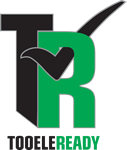What To Do After Flooding
Pay attention to authorities for information and instructions. Return home only when authorities say it is safe.
Avoid driving except in emergencies.
Wear heavy work gloves, protective clothing and waterproof boots during clean up and use appropriate face coverings or masks if cleaning mold or other debris.
People with asthma and other lung conditions and/or immune suppression should not enter buildings with indoor water leaks or mold growth that can be seen or smelled. Children should not take part in disaster cleanup work.
Be aware of the risk of electrocution. Do not touch electrical equipment if it is wet or if you are standing in water. Turn off the electricity to prevent electric shock if it is safe to do so.
Avoid wading in floodwater, which can be contaminated and contain dangerous debris. Underground or downed power lines can also electrically charge the water. Do not let children play in the water.
Electrical outlets, equipment (microwaves, TVs, etc.) are also easily damaged by exposure to flood water. Don’t assume that if the water is gone it is OK to plug something into an outlet.
Mechanical equipment, AC units, furnaces, water heaters must be evaluated by trained technicians before repowering if they have been exposed to flood water.
Be aware of areas where water has receded. Roadways may have weakened and could collapse.
Use a generator or other gasoline-powered machinery ONLY outdoors and away from windows.
Whether your home experienced inches of flood water or a few feet, the National Flood Insurance Program (NFIP) can help you recover. Report your loss immediately to your insurance agent or carrier. If you’re an NFIP policyholder, follow make a flood claim. Be sure to ask them about advance payments. Need help finding your insurance agent or carrier? Call the NFIP at 877-336-2627.
Document your flood damage
Before removing flood-damaged items from your home, policyholders should be sure to take the following steps:
Take photos and videos.
Record serial numbers.
Keep receipts.
Retain all material samples.
Contact repair services.
After taking photos, you should immediately throw away flooded items that pose a health risk, such as perishable food items, clothing, cushions, and pillows.
There are three types of “water”: white, grey, and black. White is the least dangerous – it is basically clean water (may or may not be potable). Grey and black water are ‘contaminated’ and ‘polluted.’ Grey water is defined as containing only “dirt, dust, and other particles that are lifted from the ground in its path.” Black water contains sewage and other bio-hazardous materials in it. Both grey and black water may “require special process to eliminate and remove bacteria, odors, and other microbes.” Use caution when confronted with areas that have been exposed to grey or black water.
Drywall and wall insulation is easily damaged by flood water, as is carpeting, hard wood and laminate flooring. Repair or replacement with vary widely depending on the material and length of time exposed to water – it is best to leave the analysis of whether or not these can be salvaged to water loss mitigation professionals.
Animals may be displaced during flooding and will look for places to shelter. Do not be surprised to find snakes and other creatures (raccoons, possums, other), inside structures. Use caution when confronted by wildlife, they may be agitated and confused, injured or ill. Additionally, the flood will have killed animals, this is unpleasant, but recommend that they be removed from interior spaces as soon as possible.
Mold and clean up
National Flood Insurance Program (NFIP) flood insurance policies will not cover damage from mold.
Policyholders are strongly encouraged to begin cleanup and documentation immediately after a flood to prevent the growth and spread of mold.
In some instances, it’s not possible for a policyholder to get to the property to begin cleaning. In these cases, mold damage may be covered if:
An authorized official has banned entrance to the area. Officials may restrict entrance because of downed trees, downed power lines, destroyed roadways, or other reasons.
Floodwaters remain around the home, or in the area, impeding the policyholder’s ability to inspect and maintain the insured property.
Reducing future flood damage
If your home or business is damaged by a flood, you may be required to meet certain building requirements in your community to reduce future flood damage before you rebuild or repair.
To help you cover the costs of bringing your home or business into compliance, the National Flood Insurance Program (NFIP) offers eligible policyholders up to $30,000 of Increased Cost of Compliance (ICC) coverage.
For more information on ICC coverage, call your insurance company or agent, or call the NFIP at 877-336-2726.
Whatto do after a flood – Septic System
Where can I find information on my septic system?
Please contact your local health department for additional advice and assistance. For more information on onsite or decentralized wastewater systems, you can visit EPA’s Septic Systems Web site.
Do I pump my tank during flooded or saturated drain field conditions?
No! At best, pumping the tank is only a temporary solution. Under worst conditions, pumping it out could cause the tank to try to float out of the ground and may damage the inlet and outlet pipes. The best solution is to plug all drains in the basement and drastically reduce water use in the house.
What if my septic system has been used to dispose wastewater from my business (either a home-based or small business)?
In addition to raw sewage, small businesses may use their septic system to dispose of wastewater containing chemicals. If your septic system that receives chemicals backs up into a basement or drain field take extra precautions to prevent skin, eye and inhalation contact. The proper clean-up depends of what chemicals are found in the wastewater. Contact your State or EPA for specific clean-up information.
What do I do with my septic system after the flood?
Once floodwaters have receded, there are several things homeowners should remember:
- Do not drink well water until it is tested. Contact your local health department.
- Do not use the sewage system until water in the soil absorption field is lower than the water level around the house.
- Have your septic tank professionally inspected and serviced if you suspect damage. Signs of damage include settling or an inability to accept water. Most septic tanks are not damaged by flooding since they are below ground and completely covered. However, septic tanks and pump chambers can fill with silt and debris and must be professionally cleaned. If the soil absorption field is clogged with silt, a new system may have to be installed.
- Only trained specialists should clean or repair septic tanks because tanks may contain dangerous gases. Contact your health department for a list of septic system contractors who work in your area.
- If sewage has backed up into the basement, clean the area and disinfect the floor. Use a chlorine solution of a half cup of chlorine bleach to each gallon of water to disinfect the area thoroughly.
- Pump the septic system as soon as possible after the flood. Be sure to pump both the tank and lift station. This will remove silt and debris that may have washed into the system. Do not pump the tank during flooded or saturated drain field conditions. At best, pumping the tank is only a temporary solution. Under worst conditions, pumping it out could cause the tank to try to float out of the ground and may damage the inlet and outlet pipes.
- Do not compact the soil over the soil absorption field by driving or operating equipment in the area. Saturated soil is especially susceptible to compaction, which can reduce the soil absorption field’s ability to treat wastewater and lead to system failure.
- Examine all electrical connections for damage before restoring electricity.
- Be sure the septic tank’s manhole cover is secure and that inspection ports have not been blocked or damaged.
- Check the vegetation over your septic tank and soil absorption field. Repair erosion damage and sod or reseed areas as necessary to provide turf grass cover.
- Use common sense. If possible, don’t use the system if the soil is saturated and flooded. The wastewater will not be treated and will become a source of pollution. Conserve water as much as possible while the system restores itself and the water table fails.
- Prevent silt from entering septic systems that have pump chambers. When the pump chambers are flooded, silt has a tendency to settle in the chambers and will clog the drain field if it is not removed.
- Do not open the septic tank for pumping while the soil is still saturated. Mud and silt may enter the tank and end up in the drain field. Furthermore, pumping out a tank that is in saturated soil may cause it to “pop out” of the ground. (Likewise, recently installed systems may “pop out” of the ground more readily than older systems because the soil has not had enough time to settle and compact.)
- Do not dig into the tank or drain field area while the soil is still wet or flooded. Try to avoid any work on or around the disposal field with heavy machinery while the soil is still wet. These activities will ruin the soil conductivity.
- Flooding of the septic tank will have lifted the floating crust of fats and grease in the septic tank. Some of this scum may have floated and/or partially plugged the outlet tee. If the septic system backs up into the house check the tank first for outlet blockage. Clean up any floodwater in the house without dumping it into the sink or toilet and allow enough time for the water to recede. Floodwaters from the house that are passed through or pumped through the septic tank will cause higher flows through the system. This may cause solids to transfer from the septic tank to the drain field and will cause clogging.
- Locate any electrical or mechanical devices the system may have that could be flooded to avoid contact with them until they are dry and clean.
- Aerobic plants, up flow filters, trickling filters, and other media filters have a tendency to clog due to mud and sediment. These systems will need to be washed and raked.

